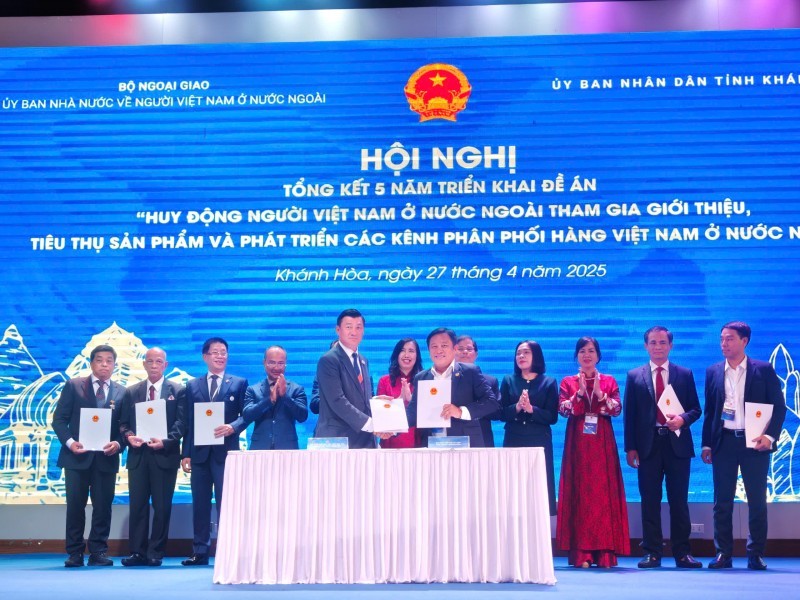Vietnam News Today (Jul. 28): American Magazine Names 29 Vietnamese Dishes Visitors Should Try
| Vietnam News Today (Jul. 28) notable headlines Vietnam attracts US$15.41 billion in FDI over seven-month period Faulty undersea cable slows internet speed in Vietnam again American magazine names 29 Vietnamese dishes visitors should try Nine agricultural items surpass 1-billion-USD mark in export turnover Action plan on electric vehicles signed President gives APEC optimistic forecasts on Vietnam's economic outlook Thailand continues to promote investment in Vietnamese market HCM City welcomes start of international textile expos Vietnam Artificial Intelligence Day set to be launched this September |
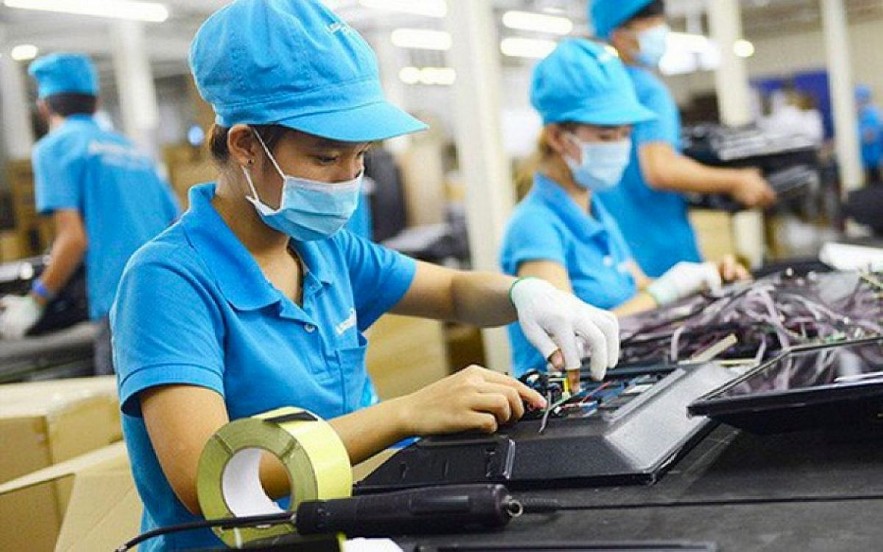 |
| Photo: VOV |
Vietnam attracts US$15.41 billion in FDI over seven-month period
Foreign investors have poured a total of US$15.41 billion into the country during the past seven months of the year, equivalent to 92.9% compared to the same period from last year, according to details given by the Ministry of Planning and Investment.
Most notably, newly-registered capital continued to endure a decrease in the reviewed period, with 927 projects worth US$5.27 billion, thereby representing a decline of 7.9% in terms of the number of projects and 43.5% in capital.
The Foreign Investment Agency (FIA) attributed the fall in newly-registered capital to the impact of anti-epidemic measures which were implemented last year.
In contrast, the number of new projects and the amount of additional registered capital has increased compared to the same period from last year with 579 projects, thereby marking a rise of 3.2% and US$7.24 billion, respectively.
Capital contributions and share purchases made by foreign investors stood at over US$2.58 billion, marking an increase of 25.7% on-year, cited VOV.
Furthermore, the adjusted capital and disbursement rate continued to witness a strong upward trajectory, a factor which highlights foreign investors’ trust in the national economy and the country’s investment climate as a whole.
Throughout the reviewed period, foreign financiers invested in 18 industries out of 21 national economic sectors in the country.
Of these, the processing and manufacturing industry continued to lead the way with a total investment of over US$10 billion, thereby accounting for 64.3% of the total registered investment capital.
In line with this, the real estate sector ranked second with total investment capital of over US$3.21 billion, accounting for approximately 20.7% of total registered investment capital.
The FIA revealed that a total of 88 countries and territories invested in the country during the seven-month period. Of which, Singapore leads the way with total investment of over US$4.3 billion, a drop of 27.3% on-year. The Republic of Korea ranked second with over US$3.26 billion, up 48.2% compared to the same period from last year.
Moreover, with the Lego project capitalised at over US$1.3 billion, Denmark continues to rank third with a total registered investment capital of roughly US$1.32 billion, accounting for 8.55% of the total capital, followed by China, Japan, and Hong Kong (China).
Faulty undersea cable slows internet speed in Vietnam again
The Asia Pacific Gateway (APG) undersea cable, which connects nine countries and territories in the region, is facing problems with its S3 branch, about 427km from China.
The fault was detected at 4 p.m. on July 26, the Internet Service Provider (ISP) said on July 27. It is not clear how long it will take for the cable to be fixed.
Last year, the country’s undersea internet cable was disrupted four times. This year there have been two disruptions, with the first in April lasting 10 days, according to VNA.
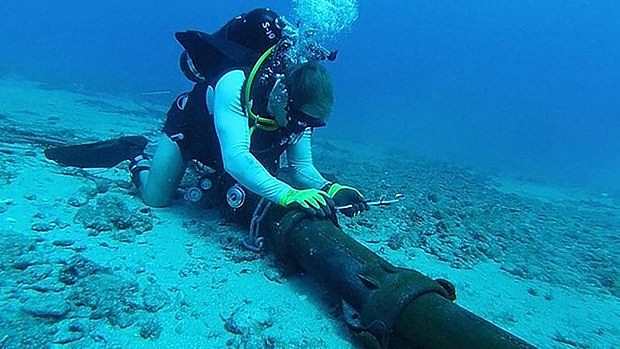 |
| Illustrative image. Photo: VNA |
The APG cable, officially launched in December 2016, is capable of providing bandwidths of up to 54 tbps (terabits per second). It runs 10,400km under the Pacific Ocean, linking Japan with China, Hong Kong (China), Taiwan (China), Malaysia, Singapore, the Republic of Korea, Thailand, and Vietnam.
The cable has the investment participation of Vietnamese telecommunication companies like the State-run Vietnam Telecommunications Group, the military-run Viettel, and two private groups FPT Telecom and CMC Telecom.
Vietnam has among the highest internet usage and development speed in the world.
As of January 2021, out of its population of over 96 million people, the number of internet users reached approximately 69 million, according to a survey by German data portal Statista.
American magazine names 29 Vietnamese dishes visitors should try
Renowned fashion magazine Vogue of the United States has revealed a list of 29 Vietnamese dishes that visitors should try when going to a Vietnamese restaurant or visiting the nation on vacation.
According to the magazine, Vietnamese cuisine is an amalgamation of various exciting types of food.
“While pho and banh mi are easily identifiable as Vietnamese, there is so much more to the fare than these two quintessential items,” says Vogue.
Among the 29 Vietnamese dishes named, including bun rieu, bun bo Hue, and bun cha, the magazine also introduces readers to delicious banh xeo and banh khot.
Banh xeo is described as a type of savory crepe that is produced from rice flour and turmeric powder, which gives it a yellow hue, and is stuffed with pork, shrimp, and bean sprouts.
Banh khot is similar to banh xeo as it uses the same batter, although it resembles a mini pancake with a single shrimp in the centre.
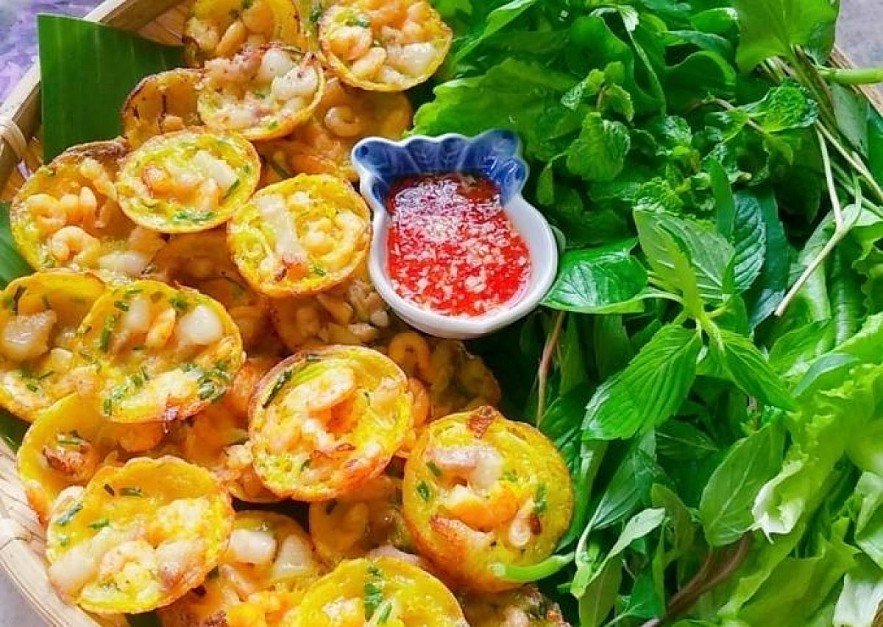 |
| Rau muong xao toi. Photo: Bach hoa xanh |
When mentioning rau muong xao toi, also known as morning glory or water spinach, a familiar dish among Vietnamese people, the magazine said the dish is a common vegetable as the country’s tropical climate creates ideal conditions for its growth.
“The best way to have it is stir-fried with copious amounts of garlic (and maybe a hint of fish sauce and sugar) — keeping it simple sometimes leads to outstanding results,” it noted.
Another signature of Vietnamese food is Com tam, also known as broken rice.
“Grilled pork, prawns, or beef sit alongside accompaniments such as fresh and pickled vegetables, an over-easy egg, crispy spring rolls, and thinly shredded pork skin,” the magazine describes.
Vogue also recommends that visitors pour a healthy amount of fish sauce over the plate to create a superb meal.
Rounding off the list of the top 29 Vietnamese dishes are Goi cuon, fried spring rolls, Thit kho to, Cao lau, a Hoi An noodle specialty, Banh cuon, rice noodle rolls, Bo luc lac, a type of beef, and Bun thit nuong, grilled marinated pork. This is in addition to Goi xoai, mango salad, Canh chua, sweet and sour soup, Hen xuc banh trang, stir-fried baby clams, Chao, a type of porridge, Hu tieu, Xoi, sticky rice, Lau, hot pot, and Mi Quang.
Nine agricultural items surpass 1-billion-USD mark in export turnover
Nine agricultural products have recorded an export turnover of over 1 billion USD since the beginning of this year, heard a seminar on July 26.
They comprised coffee, rubber, cashew nuts, vegetables and fruit, rice, tra fish (pangasius), shrimp, wood products and materials in service of production, said Dao Duy Tam, deputy head of the Customs Control and Supervision Department under the General Department of Customs.
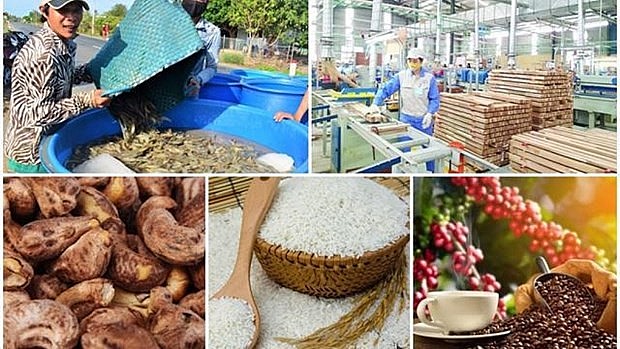 |
| Illustrative image. Source: congthuong.vn |
Vietnam has earned US$201 billion from exports so far this year, up 17.3% year-on-year, of which nearly US$28 billion came from agriculture, a rise of 13.9%, reported VNA.
Tam said the simplified customs procedures have facilitated exports, particularly agro-fishery products, adding that up to 80% of agricultural products have gone through “green zone” established to speed up customs clearance procedures.
Action plan on electric vehicles signed
In 2022-2030, Vietnam plans to shift to using electric vehicles for road transport. By 2050, 100 percent of buses and taxis would use electricity and green energy.
Deputy Prime Minister Le Van Thanh on July 22 signed a decision to approve an action plan on shifting to green energy and reducing carbon and methane emissions in the transportation sector.
The overall objective of the strategy is developing a green transport system to reach the goal of zero net greenhouse gas emissions by 2050.
From now to 2030, Vietnam will increase energy use efficiency, and accelerate the shift to electricity and green energy in fields belonging to the transport sector to implement Vietnam’s NDC (national determined contributions) and its task to reduce methane emissions.
By 2050, Vietnam will develop modes of transport, and carry out equipment and transport infrastructure to electricity and green energy, striving for zero net greenhouse gas emissions by 2050.
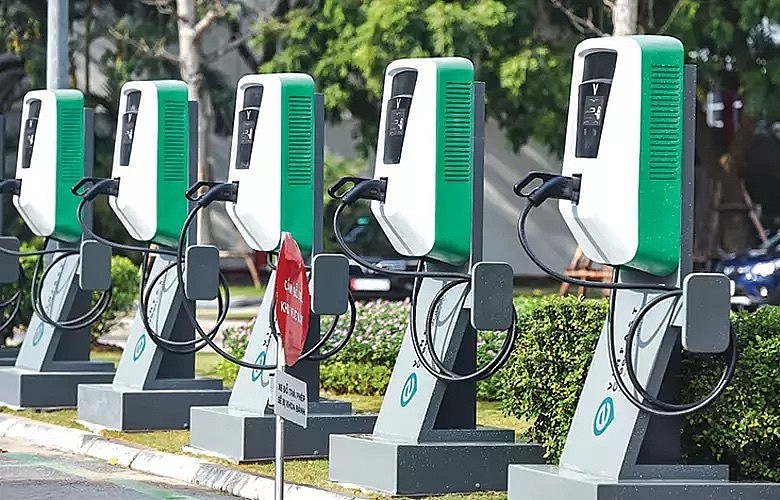 |
| Photo: VNN |
Regarding the shift to green energy, in 2022-2030, Vietnam will promote the production, assembling and importing of electric vehicles. At the same time, it will expand the mixing of biological fuel before using 100% E5; develop charging stations to satisfy the demand of people and businesses; and encourage bus stations to carry out transformation under green criteria.
The government has also asked to pilot the use of railways using electricity and green energy. At the same time, Vietnam will build new railway lines in the direction of electrification; build a plan to replace old railways with means that can be switched to electricity; and encourage the conversion of loading and unloading equipment at stations to ones using electricity and green energy, cited VNN.
In terms of internal waterways, the government is encouraging the building, importing and switching to electricity-run inland waterways; and new criteria for green ports and green transport routes, which would be the foundation for policies to encourage new investments in inland green ports.
In terms of urban transport, from 2025, 100 percent of buses will be replaced with ones using green energy. It is expected that the rate of public passenger transport in Hanoi would be 45-50 percent. The figures would be 25 percent in HCM City, 25-35 percent in Da Nang, 20 percent in Can Tho, 10-15 percent in Hai Phong and 5 percent in first-class urban areas.
From 2030, 50 percent of means of transport will use electricity and green energy, while 100 percent of taxis would be replaced with vehicles using green energy.
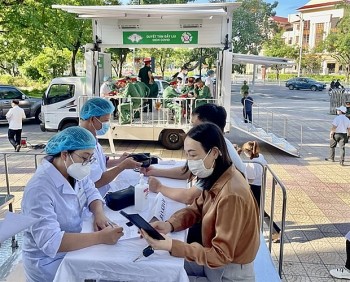 | Vietnam News Today (Jul. 25): As Covid-19 Cases Rise Again, Experts Insist on More Vigilance Vietnam News Today (Jul. 25): As Covid-19 cases rise again, experts insist on more vigilance; Ho Chi Minh City university to launch academic center for ... |
 | Vietnam News Today (Jul. 26): Vietnam Poised to Become Leader in Global Blockchain Industry Vietnam News Today (Jul. 26): Vietnam logs additional 896 Covid-19 cases on July 25; Vietnam poised to become leader in global blockchain industry; Vietnam – ... |
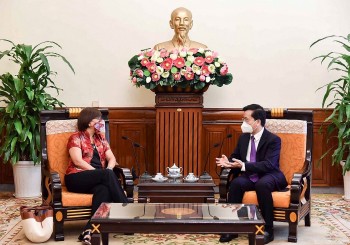 | Vietnam News Today (Jul. 27): Vietnam Attaches Importance to APEC Cooperation Vietnam News Today (Jul. 27): Vietnam logs 1,460 Covid-19 cases on July 26; Vietnam attaches importance to APEC cooperation; PM urges faster vaccination amid Covid-19 ... |
Recommended
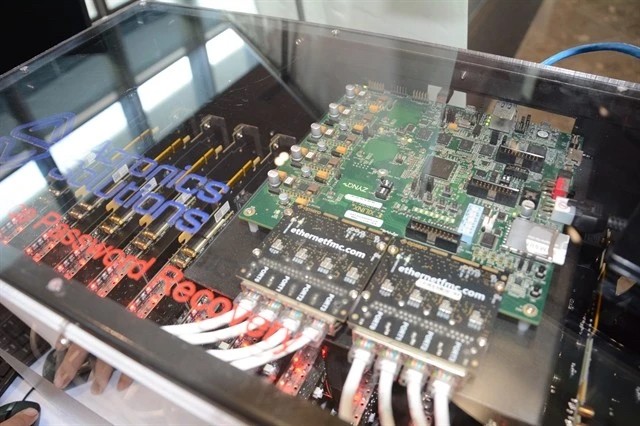 National
National
Vietnam News Today (May 11): Vietnam, Austria to Boost Cooperation in High-Tech Development, Innovation
 National
National
Vietnam News Today (May 10): Vietnamese Peacekeepers Honored with UN Medal in South Sudan
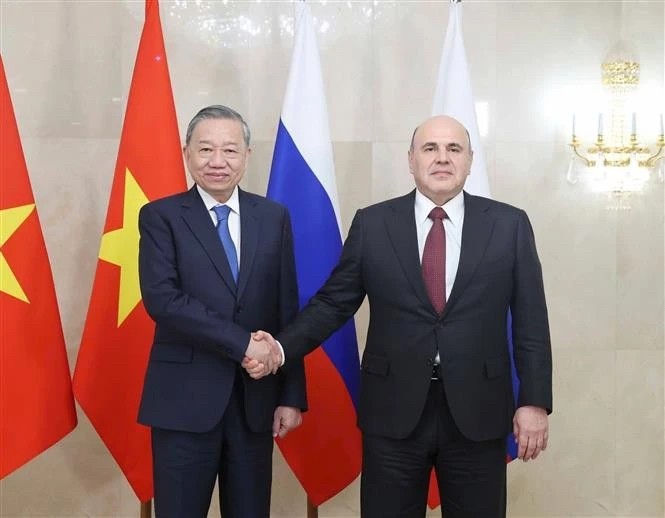 National
National
Vietnam News Today (May 9): Vietnam Ready to Work With Russia to Elevate Relations
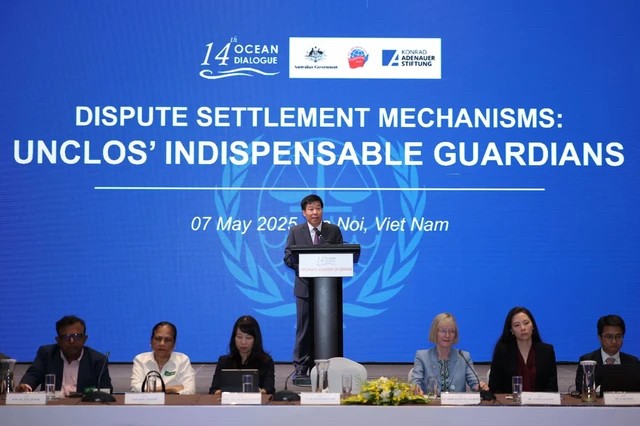 National
National
Vietnam News Today (May 8): Vietnam Remains Committed to UNCLOS
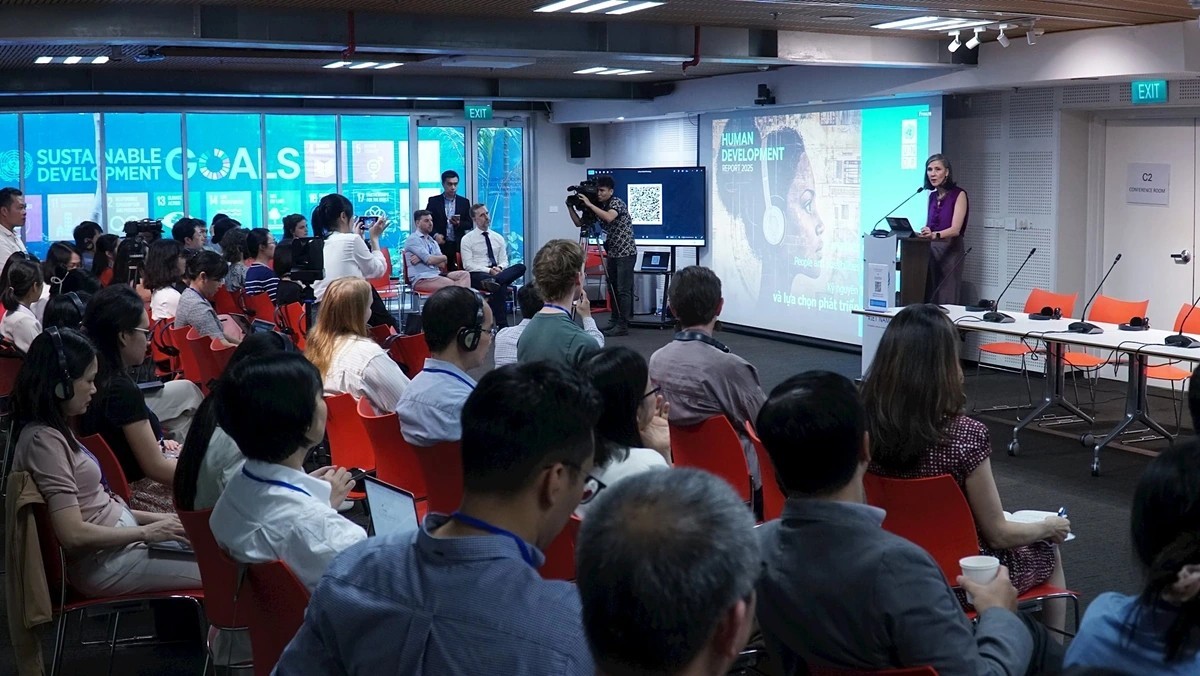 National
National
Vietnam News Today (May 13): Vietnam Maintains High Human Development Index Despite Global Slowdown
 National
National
Vietnam News Today (May 12): Party General Secretary Meets With Russian Experts, Intellectuals
 National
National
Vietnam News Today (May 7): Vietnam Hosts Over 7.67 Million International Visitors in First 4 Months
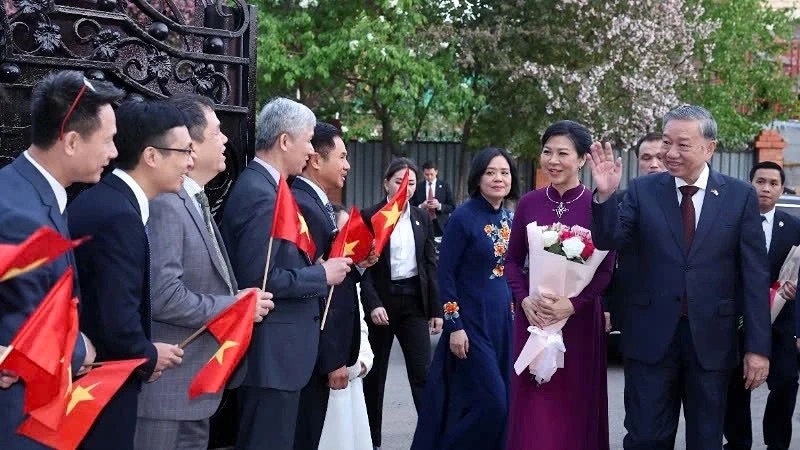 National
National

